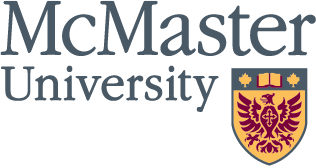McMaster Bond Issue – Questions & Answers

McMaster Bond Issue
Capital Financing Strategy
1. Why does the University need to raise money through a bond issue?
McMaster is one of Canada's leading universities and to maintain this position it is important that it continue to develop leading-edge academic, teaching and research programs. It has made strategic decisions to support a series of projects that are investments in the University's future success.
The successful private bond issue will reinforce the University's financial stability and fiscal management and demonstrate confidence in McMaster's potential for continued growth and development.
2. Is this a risky undertaking?
No. It is a prudent and carefully thought out undertaking that will strengthen McMaster's standing and financial position as it proceeds on its most significant expansion in the past 30 years. It will help to ensure that we continue to provide the highest possible quality education for our students, research opportunities for faculty, and working environment for employees.
We are not the first to take this approach. A number of Canada's most successful universities have floated similar bond issues that have allowed them to take advantage of low interest rates on long-term bonds.
3. What other funding options did the University consider?
Bank financing, a public bond placement and lease financing are a few of the options that were considered. The private bond issue is the best option to protect McMaster's financial health. It minimizes the financial cost while giving the University the greatest flexibility in repayment options and in managing our financial position.
4. How much money is the University going to borrow?
The recommendation to the Board of Governors is for a bond issue between $90 and $120 million with a term of 30 to 40 years.
5. Where will the money go?
The bond issue will support capital projects over the next two to three years. These projects have been approved by the Board of Governors. They include an investment of almost $38 million in classroom and lab renovations and expansion, completion of funding for the University Centre, and more than $19 million in strategic research expansion.
6. What kind of credit rating does McMaster expect to achieve?
We're optimistic that the University is in a strong position to achieve a good credit rating. McMaster has a sizeable endowment, a strong reputation, a diversified and stable revenue base, is well managed and has a favorable growth outlook.
7. How much will the bond issue cost the university on an annual basis?
Depending on the terms of the final bond issue, it will cost the University approximately $8.7 million a year in debt service costs.
8. How will McMaster pay the added cost?
The cost could be covered by the interest on the University's share of the anticipated pension surplus, a $3.5 million capital cost provision already designated within the operating budget, and revenue from ancillary operations such as parking. If new revenue sources for the specific capital projects are developed, they could offset the University's financial obligation.
9. Why isn't the University spending the pension surplus on the capital projects?
The bond issue gives the University the opportunity to secure long-term fixed rate funding at a time of favorable interest rates. By using the earning potential of the pension surplus, McMaster can offset a significant portion of the bond payment without diminishing the pension surplus capital that can then be used to help fund future initiatives.
10. Why did the University commit to the capital projects if it didn't have all the money needed to complete the projects?
By taking advantage of provincial and federal government matching grant programs and securing more funds through successful fundraising initiatives, the University was able to leverage about $140 million for various projects.
11. How will the University pay for any new capital projects?
Each project will be assessed on its own merits based on its contribution to the University's strategic objectives. The bond issue is a solution for the University's short-term capital funding requirements. Continued support from the provincial and federal governments and private sector support will be critical to our future success. We will continue to work with our funding partners to ensure that support is in place to support future projects.

